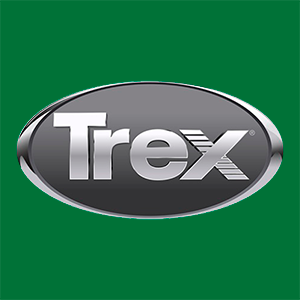
Griffon (GFF)
Griffon doesn’t excite us. Its sluggish sales growth shows demand is soft, a worrisome sign for investors in high-quality stocks.― StockStory Analyst Team
1. News
2. Summary
Why Griffon Is Not Exciting
Initially in the defense industry, Griffon (NYSE:GFF) is a now diversified company specializing in home improvement, professional equipment, and building products.
- Projected sales for the next 12 months are flat and suggest demand will be subdued
- Annual revenue growth of 1.2% over the last five years was below our standards for the industrials sector
- A consolation is that its performance over the past five years shows its incremental sales were extremely profitable, as its annual earnings per share growth of 28.4% outpaced its revenue gains


Griffon’s quality is lacking. Our attention is focused on better businesses.
Why There Are Better Opportunities Than Griffon
High Quality
Investable
Underperform
Why There Are Better Opportunities Than Griffon
Griffon’s stock price of $74.57 implies a valuation ratio of 12.4x forward P/E. This multiple is lower than most industrials companies, but for good reason.
Cheap stocks can look like a great deal at first glance, but they can be value traps. They often have less earnings power, meaning there is more reliance on a re-rating to generate good returns - an unlikely scenario for low-quality companies.
3. Griffon (GFF) Research Report: Q3 CY2025 Update
Multi-industry consumer and professional products manufacturer Griffon Corporation (NYSE:GFF) reported Q3 CY2025 results exceeding the market’s revenue expectations, but sales were flat year on year at $662.2 million. On the other hand, the company’s full-year revenue guidance of $2.5 billion at the midpoint came in 1.5% below analysts’ estimates. Its non-GAAP profit of $1.54 per share was 1.7% above analysts’ consensus estimates.
Griffon (GFF) Q3 CY2025 Highlights:
- Revenue: $662.2 million vs analyst estimates of $631.5 million (flat year on year, 4.9% beat)
- Adjusted EPS: $1.54 vs analyst estimates of $1.52 (1.7% beat)
- Adjusted EBITDA: $137.9 million vs analyst estimates of $136 million (20.8% margin, 1.4% beat)
- EBITDA guidance for the upcoming financial year 2026 is $590 million at the midpoint, above analyst estimates of $549.6 million
- Operating Margin: 18%, in line with the same quarter last year
- Free Cash Flow Margin: 9.4%, up from 8% in the same quarter last year
- Market Capitalization: $3.11 billion
Company Overview
Initially in the defense industry, Griffon (NYSE:GFF) is a now diversified company specializing in home improvement, professional equipment, and building products.
Founded in 1959 and headquartered in New York, N.Y., Griffon focuses on maintaining leading positions in the markets it serves by providing innovative, branded products with superior quality and industry-leading service.
The company operates through two reportable segments: Home and Building Products (HBP) and Consumer and Professional Products (CPP). The HBP segment consists of Clopay Corporation, the largest manufacturer and marketer of garage doors and rolling steel doors in North America. The CPP segment is a leading global provider of branded consumer and professional tools, residential, industrial and commercial fans, home storage and organization products, and products that enhance indoor and outdoor lifestyles.
Griffon's HBP segment, operating under the Clopay brand, offers a broad line of residential sectional garage doors and commercial doors. Clopay's products are sold through 3,000+ independent professional installing dealers and major home center retail chains.
The CPP segment operates under several brands, including AMES, Hunter, True Temper, and ClosetMaid. This segment manufactures and markets a wide range of products including long-handled tools, landscaping products, home organization solutions, and residential, industrial, and commercial fans. CPP's products are sold through various channels, including home centers, mass market retailers, hardware stores, and e-commerce platforms.
Griffon has undergone significant transformation in recent years, including the divestiture of its Defense Electronics segment in 2022 and the acquisition of Hunter Fan Company in the same year.
4. Home Construction Materials
Traditionally, home construction materials companies have built economic moats with expertise in specialized areas, brand recognition, and strong relationships with contractors. More recently, advances to address labor availability and job site productivity have spurred innovation that is driving incremental demand. However, these companies are at the whim of residential construction volumes, which tend to be cyclical and can be impacted heavily by economic factors such as interest rates. Additionally, the costs of raw materials can be driven by a myriad of worldwide factors and greatly influence the profitability of home construction materials companies.
Other companies competing with Griffon in its respective industries include Masco (NYSE:MAS), Stanley Black & Decker (NYSE:SWK), and Fortune Brands Home & Security (NYSE:FBHS).
5. Revenue Growth
A company’s long-term sales performance can indicate its overall quality. Any business can have short-term success, but a top-tier one grows for years. Regrettably, Griffon’s sales grew at a weak 1.2% compounded annual growth rate over the last five years. This fell short of our benchmarks and is a tough starting point for our analysis.
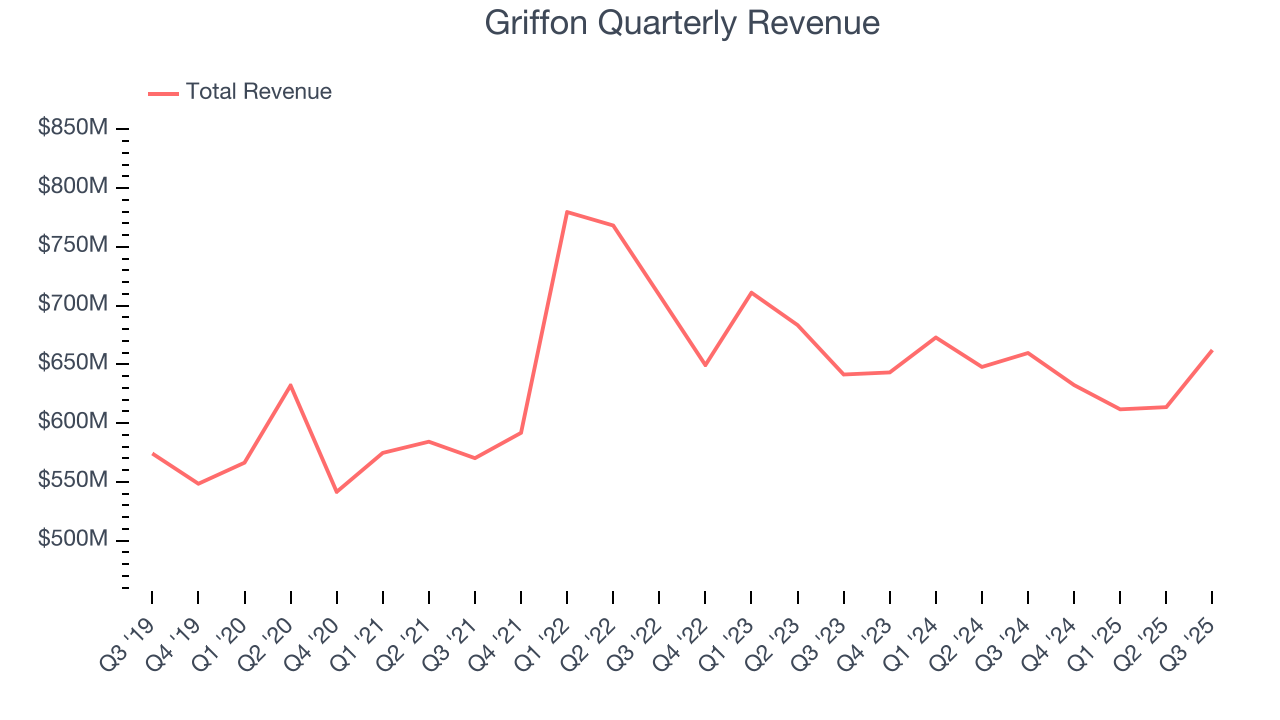
We at StockStory place the most emphasis on long-term growth, but within industrials, a half-decade historical view may miss cycles, industry trends, or a company capitalizing on catalysts such as a new contract win or a successful product line. Griffon’s performance shows it grew in the past but relinquished its gains over the last two years, as its revenue fell by 3.1% annually. 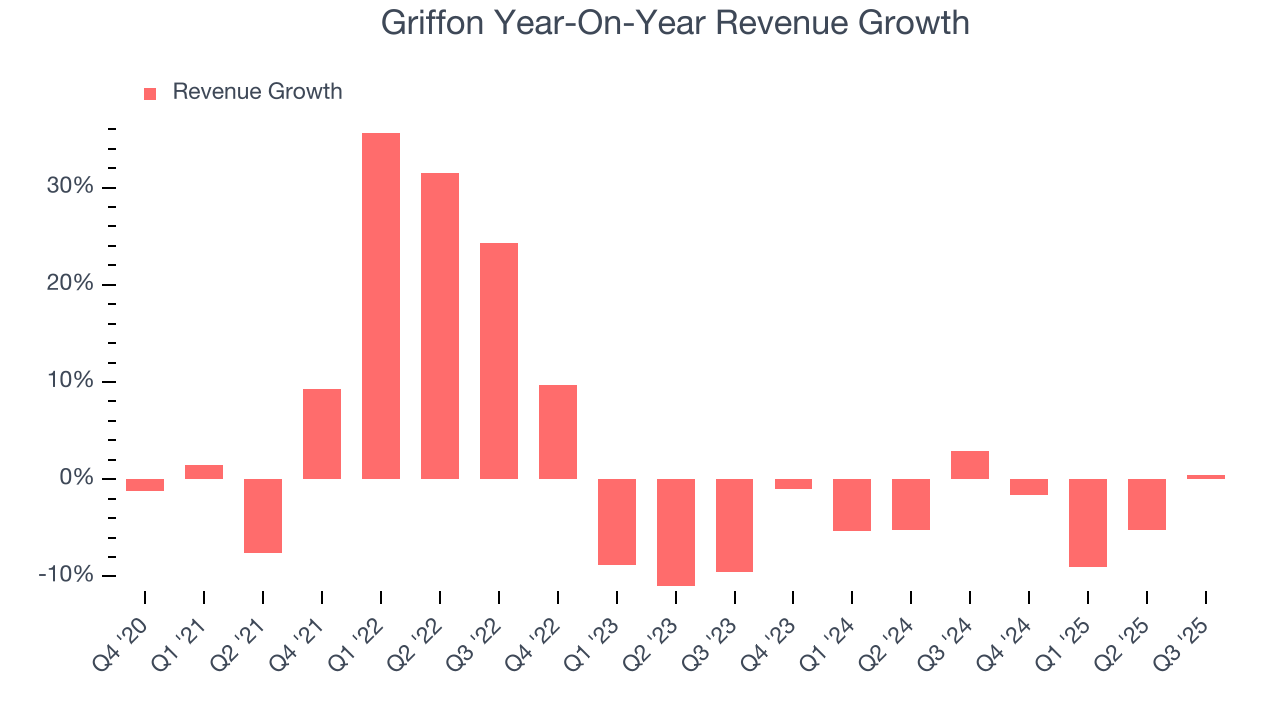
This quarter, Griffon’s $662.2 million of revenue was flat year on year but beat Wall Street’s estimates by 4.9%.
Looking ahead, sell-side analysts expect revenue to remain flat over the next 12 months. While this projection suggests its newer products and services will fuel better top-line performance, it is still below average for the sector.
6. Gross Margin & Pricing Power
Griffon’s unit economics are great compared to the broader industrials sector and signal that it enjoys product differentiation through quality or brand. As you can see below, it averaged an excellent 36.6% gross margin over the last five years. That means Griffon only paid its suppliers $63.36 for every $100 in revenue. 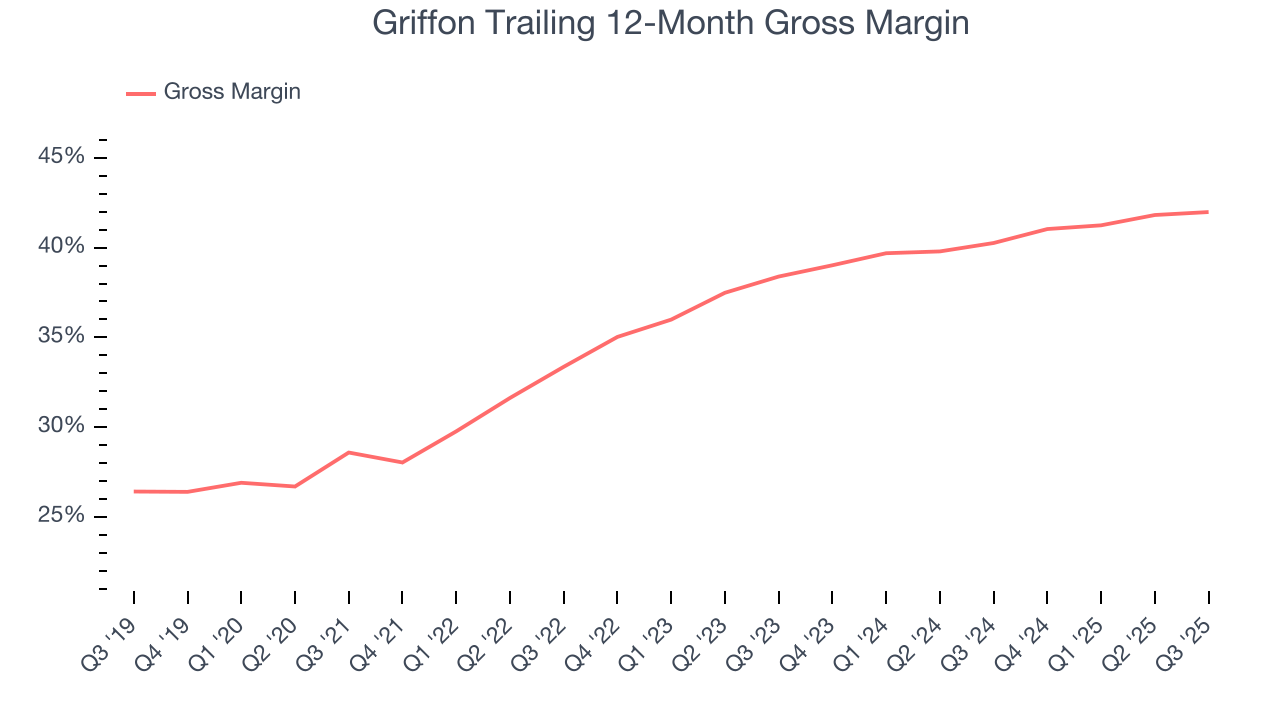
This quarter, Griffon’s gross profit margin was 41.7%, in line with the same quarter last year. On a wider time horizon, Griffon’s full-year margin has been trending up over the past 12 months, increasing by 1.7 percentage points. If this move continues, it could suggest better unit economics due to some combination of stable to improving pricing power and input costs (such as raw materials).
7. Operating Margin
Griffon has been an efficient company over the last five years. It was one of the more profitable businesses in the industrials sector, boasting an average operating margin of 14.2%. This result isn’t surprising as its high gross margin gives it a favorable starting point.
Analyzing the trend in its profitability, Griffon’s operating margin rose by 9.4 percentage points over the last five years, as its sales growth gave it operating leverage.
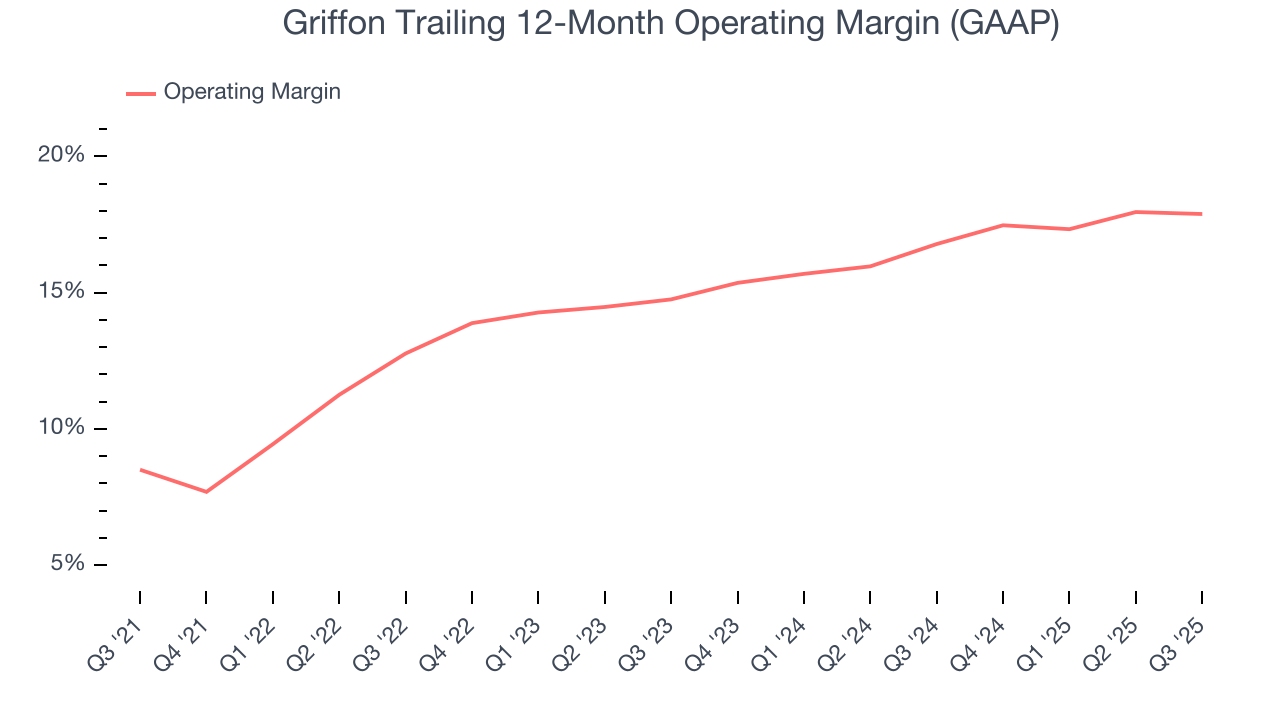
In Q3, Griffon generated an operating margin profit margin of 18%, in line with the same quarter last year. This indicates the company’s cost structure has recently been stable.
8. Earnings Per Share
We track the long-term change in earnings per share (EPS) for the same reason as long-term revenue growth. Compared to revenue, however, EPS highlights whether a company’s growth is profitable.
Griffon’s EPS grew at an astounding 28.4% compounded annual growth rate over the last five years, higher than its 1.2% annualized revenue growth. This tells us the company became more profitable on a per-share basis as it expanded.

Diving into Griffon’s quality of earnings can give us a better understanding of its performance. As we mentioned earlier, Griffon’s operating margin was flat this quarter but expanded by 9.4 percentage points over the last five years. This was the most relevant factor (aside from the revenue impact) behind its higher earnings; interest expenses and taxes can also affect EPS but don’t tell us as much about a company’s fundamentals.
Like with revenue, we analyze EPS over a more recent period because it can provide insight into an emerging theme or development for the business.
For Griffon, its two-year annual EPS growth of 11.5% was lower than its five-year trend. We still think its growth was good and hope it can accelerate in the future.
In Q3, Griffon reported adjusted EPS of $1.54, up from $1.47 in the same quarter last year. This print beat analysts’ estimates by 1.7%. Over the next 12 months, Wall Street expects Griffon’s full-year EPS of $5.66 to grow 10.8%.
9. Cash Is King
If you’ve followed StockStory for a while, you know we emphasize free cash flow. Why, you ask? We believe that in the end, cash is king, and you can’t use accounting profits to pay the bills.
Griffon has shown impressive cash profitability, enabling it to ride out cyclical downturns more easily while maintaining its investments in new and existing offerings. The company’s free cash flow margin averaged 8.5% over the last five years, better than the broader industrials sector.
Taking a step back, we can see that Griffon’s margin expanded by 9.5 percentage points during that time. This is encouraging because it gives the company more optionality.

Griffon’s free cash flow clocked in at $62.39 million in Q3, equivalent to a 9.4% margin. This result was good as its margin was 1.5 percentage points higher than in the same quarter last year, building on its favorable historical trend.
10. Return on Invested Capital (ROIC)
EPS and free cash flow tell us whether a company was profitable while growing its revenue. But was it capital-efficient? A company’s ROIC explains this by showing how much operating profit it makes compared to the money it has raised (debt and equity).
Although Griffon hasn’t been the highest-quality company lately because of its poor top-line performance, it historically found a few growth initiatives that worked out well. Its five-year average ROIC was 17.5%, impressive for an industrials business.
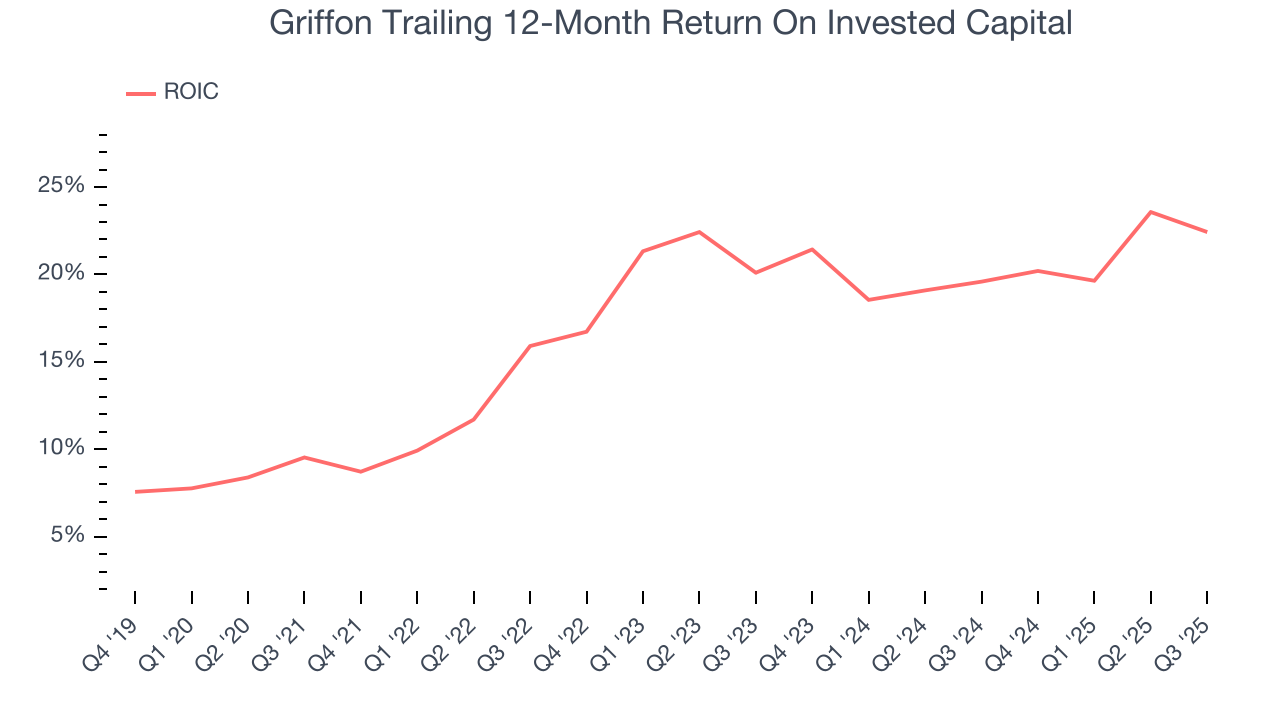
We like to invest in businesses with high returns, but the trend in a company’s ROIC is what often surprises the market and moves the stock price. Fortunately, Griffon’s has increased over the last few years. This is a good sign, and if its returns keep rising, there’s a chance it could evolve into an investable business.
11. Balance Sheet Assessment
Griffon reported $99.05 million of cash and $1.59 billion of debt on its balance sheet in the most recent quarter. As investors in high-quality companies, we primarily focus on two things: 1) that a company’s debt level isn’t too high and 2) that its interest payments are not excessively burdening the business.

With $522.3 million of EBITDA over the last 12 months, we view Griffon’s 2.9× net-debt-to-EBITDA ratio as safe. We also see its $48.69 million of annual interest expenses as appropriate. The company’s profits give it plenty of breathing room, allowing it to continue investing in growth initiatives.
12. Key Takeaways from Griffon’s Q3 Results
We were impressed by how significantly Griffon blew past analysts’ revenue expectations this quarter. We were also glad its full-year EBITDA guidance trumped Wall Street’s estimates. On the other hand, its full-year revenue guidance slightly missed. Overall, this print was mixed. The stock remained flat at $66.50 immediately after reporting.
13. Is Now The Time To Buy Griffon?
Updated: December 4, 2025 at 9:06 PM EST
Are you wondering whether to buy Griffon or pass? We urge investors to not only consider the latest earnings results but also longer-term business quality and valuation as well.
There are some bright spots in Griffon’s fundamentals, but its business quality ultimately falls short. Although its revenue growth was weak over the last five years, its rising cash profitability gives it more optionality. Be wary, however, as Griffon’s projected EPS for the next year is lacking.
Griffon’s P/E ratio based on the next 12 months is 12.5x. This valuation multiple is fair, but we don’t have much faith in the company. We're pretty confident there are superior stocks to buy right now.
Wall Street analysts have a consensus one-year price target of $101.29 on the company (compared to the current share price of $73.27).




